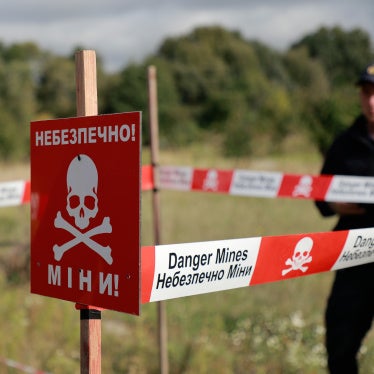Thank you Mr. Chairman.
In the context of the CCW, we believe that the introduction of the draft alternative protocol is a very positive development. We are pleased with the serious and wide-ranging discussion we have heard today and believe that discussions on the alternative protocol should be carried forward into the Review Conference negotiations in November.
The alternative protocol re-orients the negotiations in the proper direction. The protocol itself and the reactions to it today make clear that there is no consensus on the chair’s draft protocol text. They have also served to bring into sharp focus the many deep flaws in the chair’s text.
However, as we said on Monday, the CMC cannot support the alternative text as new international law on cluster munitions. Like the chair’s text, it too falls far short of what is needed to deal adequately with the dangers and consequences of cluster munitions. It will come as no surprise that we believe there should be firm, legally binding and time bound obligations, as is the case with the Convention on Cluster Munitions.
But the alternative protocol could have a much more positive humanitarian impact than the chair’s text. If CCW states were to agree to and implement the alternative protocol in good faith, it would have a very far-reaching effect.
Notably, the alternative protocol calls for the destruction of all stockpiled cluster munitions. It calls for the prohibition of all transfers of cluster munitions. And very importantly, it calls for the adoption of national measures aimed at comprehensive prohibitions on cluster munitions.
But just as important as what the alternative protocol does, is what it does not do. It does not facilitate and encourage the future use and production of cluster munitions, as does the chair’s text. It does not have debilitating loopholes and exceptions, as does the chair’s text.
We understand, Mr. Chairman, that beauty is in the eyes of the beholder. What we view as debilitating loopholes and exceptions are precisely the things that the US delegation earlier today identified as “forward steps.”
This includes the blanket exemption of cluster munitions that have a failure rate of less than 1 percent. As the UNDP pointed out in its excellent intervention at the start of this session, this failure rate approach is seriously flawed and is not tenable as a basis for an international agreement. This was also the conclusion of the 108 states that negotiated and adopted the Convention on Cluster Munitions just three years ago.
This also includes the exception for cluster munitions with a single safeguard, such as a self-destruct device. Again, this approach was debated extensively by 108 states during the Dublin negotiations, and rejected on the grounds that such cluster munitions would pose unacceptable dangers to civilians.
Finally it also includes the prohibition on use of cluster munitions produced prior to 1980, which the US and others have trumpeted as having an immediate and meaningful impact. We earlier heard the UNDP state that its experts have concluded that this provision would have no significant impact, as such weapons are mostly obsolete, of limited military utility, and would have to be destroyed soon in any event.
The CMC has already pointed out that while CCW states do stockpile a large number of pre-1980 cluster munitions, under this provision, those states would still be able to keep an even larger number of cluster munitions for unlimited use. It appears that CCW states would be able to keep the majority of their existing stocks, consisting of many millions of cluster munitions, containing many hundreds of thousands of submunitions, perhaps more than one billion submunitions, many of which are documented to have caused devastating harm to civilians.
In another way to look at this, Human Rights Watch distributed a chart that identified about three dozen types of cluster munitions that are known to have been used since World War II. Of these, only a handful, and perhaps even less, would be captured by the pre-1980 prohibition.
In yet another way to look at it, we believe that there have been five instances of use of cluster munitions since the Convention on Cluster Munitions was negotiated in 2008. The cluster munitions that Libya used earlier this year were produced after 1980. The cluster munitions that Thailand used earlier this year were produced after 1980. The cluster munition that the United States used in Yemen several years ago was produced after 1980. The cluster munitions that Georgia used in 2008 were produced after 1980. We believe that the cluster munitions that Russia used in Georgia in 2008 were produced after 1980.
Mr. Chairman, cluster munitions produced after 1980 are not safe and reliable. They are an integral part of the problem posed by cluster munitions, and that is why most of the world has banned them.
The only conclusion to draw is that the chair’s text is not likely to deter or hamper future use of cluster munitions, but instead is likely to promote future use. Faced with that reality, CCW states should seriously consider alternatives, including a political declaration and national measures. Thank you.








